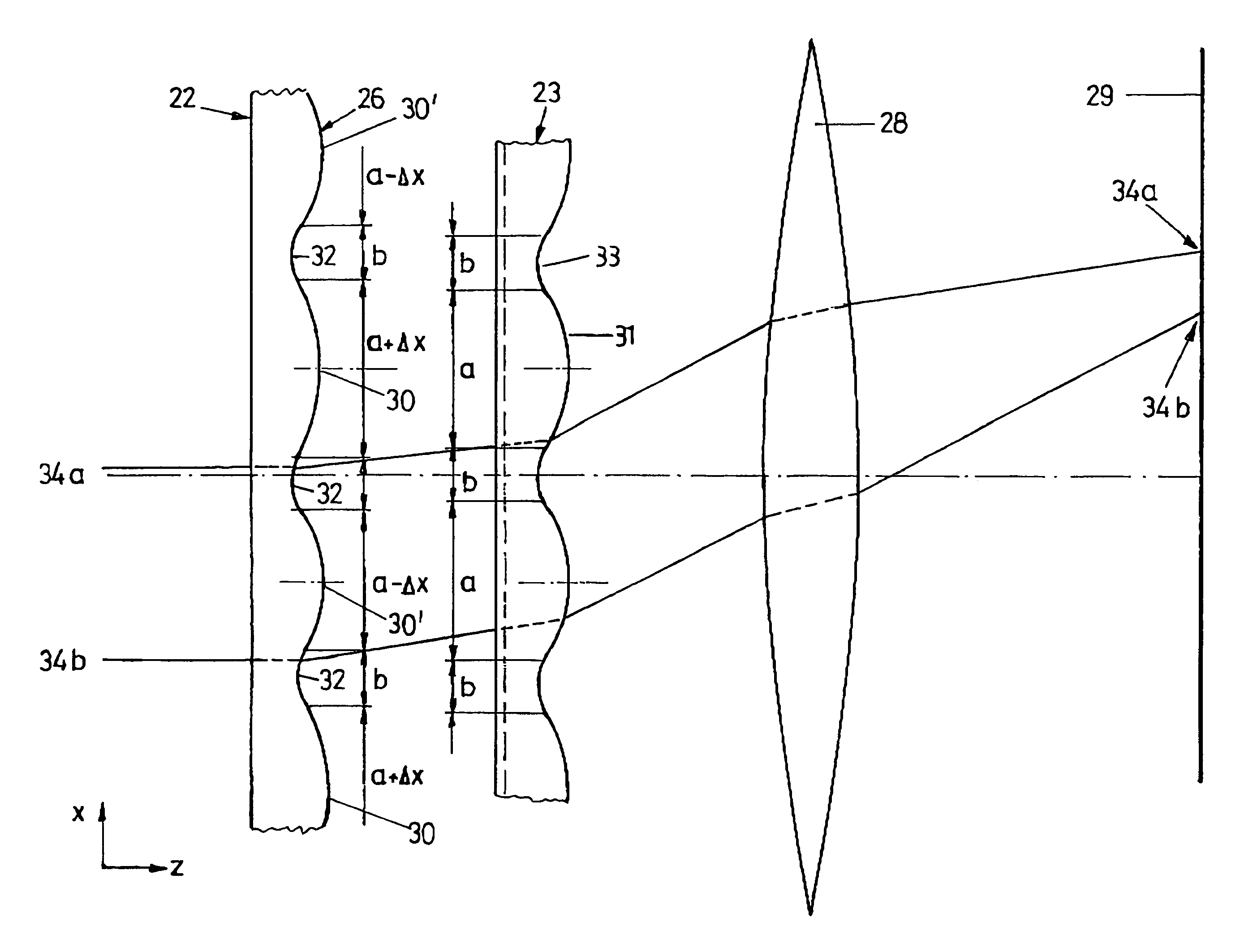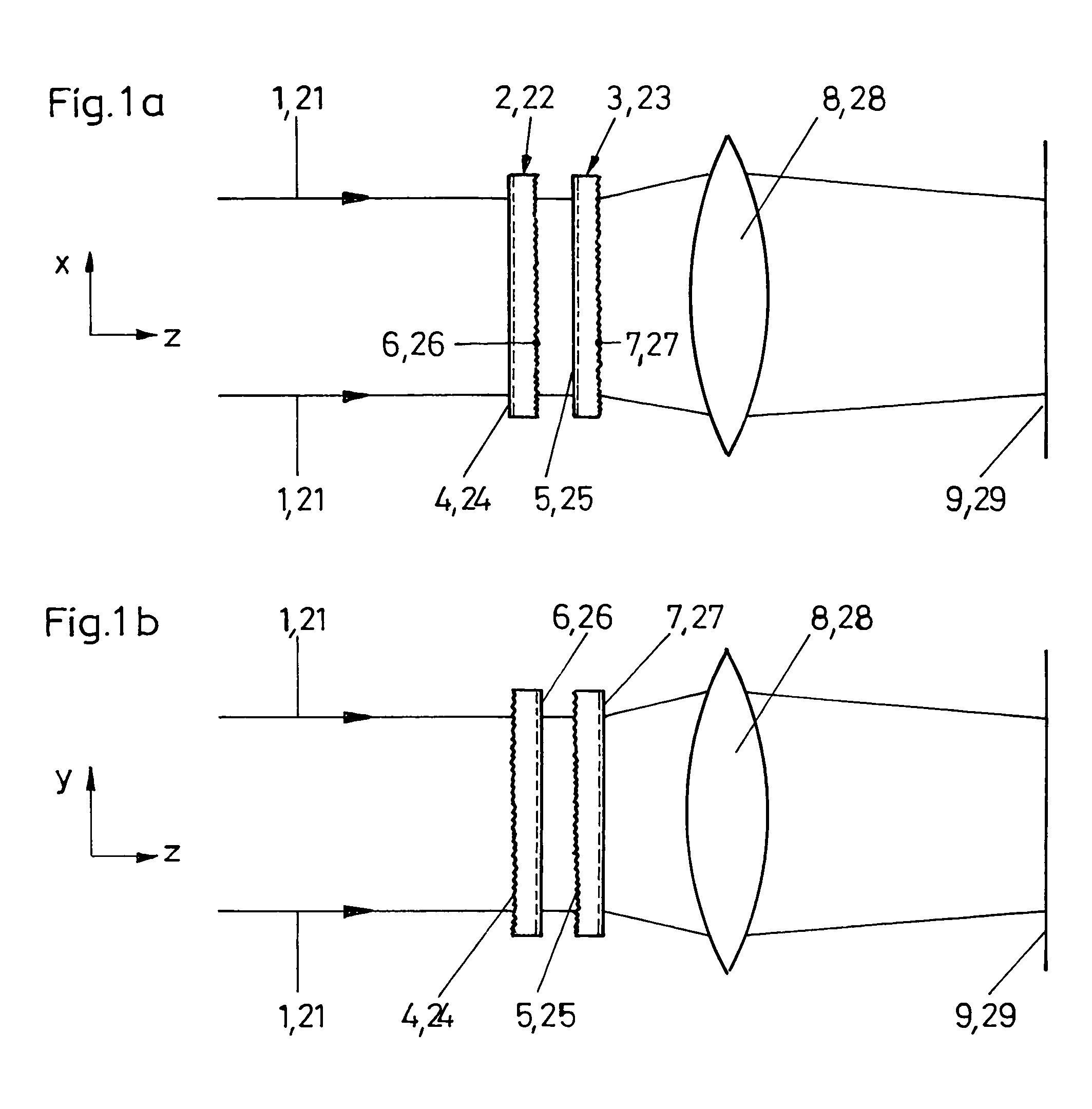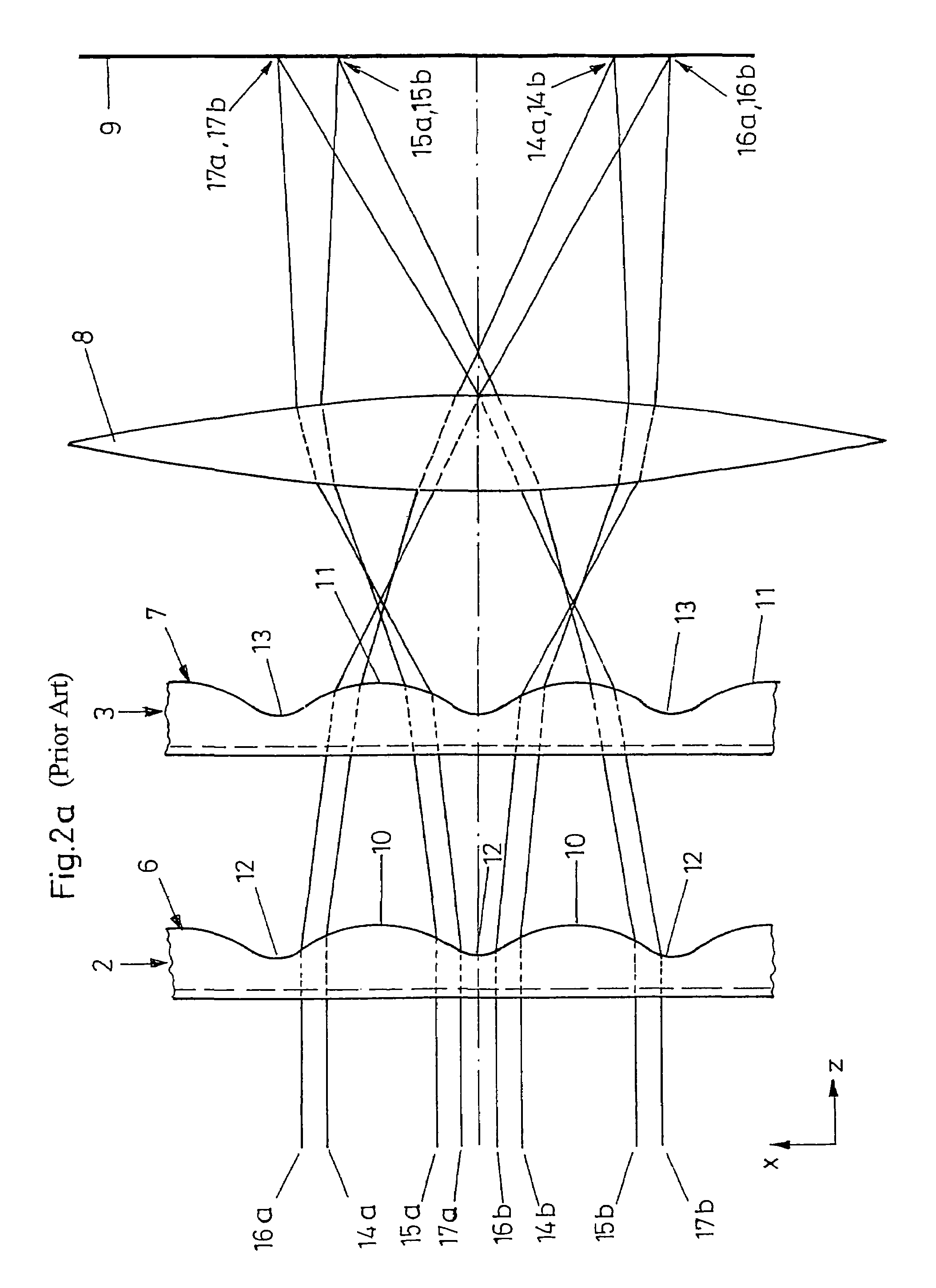Apparatus for shaping a light beam
a technology for shaping apparatus and light beam, which is applied in the direction of light and heating apparatus, instruments, transportation and packaging, etc., can solve the problems of intensity peaks b>19/b>, the inability to use the entire area of optically functional boundary surfaces for shaping laser beams, and the inability to control the intensity of the laser beam
- Summary
- Abstract
- Description
- Claims
- Application Information
AI Technical Summary
Benefits of technology
Problems solved by technology
Method used
Image
Examples
Embodiment Construction
[0024]FIG. 1a and FIG. 1b are schematized in such a way that they can illustrate both the apparatus from the prior art in accordance with FIG. 2a, and an inventive apparatus in accordance with FIG. 3a. The components illustrated in FIG. 1a and FIG. 1b are, firstly, provided with single digit reference numerals 1 to 9 and thereby designate parts that have been explained in the description relating to the prior art in accordance with FIG. 2a. Furthermore, the same parts are provided with double-digit reference numerals 21 to 29, and in this case designate individual parts of the inventive apparatus in accordance with FIG. 3a. In particular, according to the invention in FIG. 1a and FIG. 1b a laser beam 21 runs in the positive Z-direction through lens arrays 22, 23, and is subsequently focused onto an operating plane 25 by a lens means 28 serving as a Fourier lens. In a way similar to the prior art, the lens arrays 22, 23 have optically functional surfaces 24, 25 on the entrance sides,...
PUM
 Login to View More
Login to View More Abstract
Description
Claims
Application Information
 Login to View More
Login to View More - R&D
- Intellectual Property
- Life Sciences
- Materials
- Tech Scout
- Unparalleled Data Quality
- Higher Quality Content
- 60% Fewer Hallucinations
Browse by: Latest US Patents, China's latest patents, Technical Efficacy Thesaurus, Application Domain, Technology Topic, Popular Technical Reports.
© 2025 PatSnap. All rights reserved.Legal|Privacy policy|Modern Slavery Act Transparency Statement|Sitemap|About US| Contact US: help@patsnap.com



